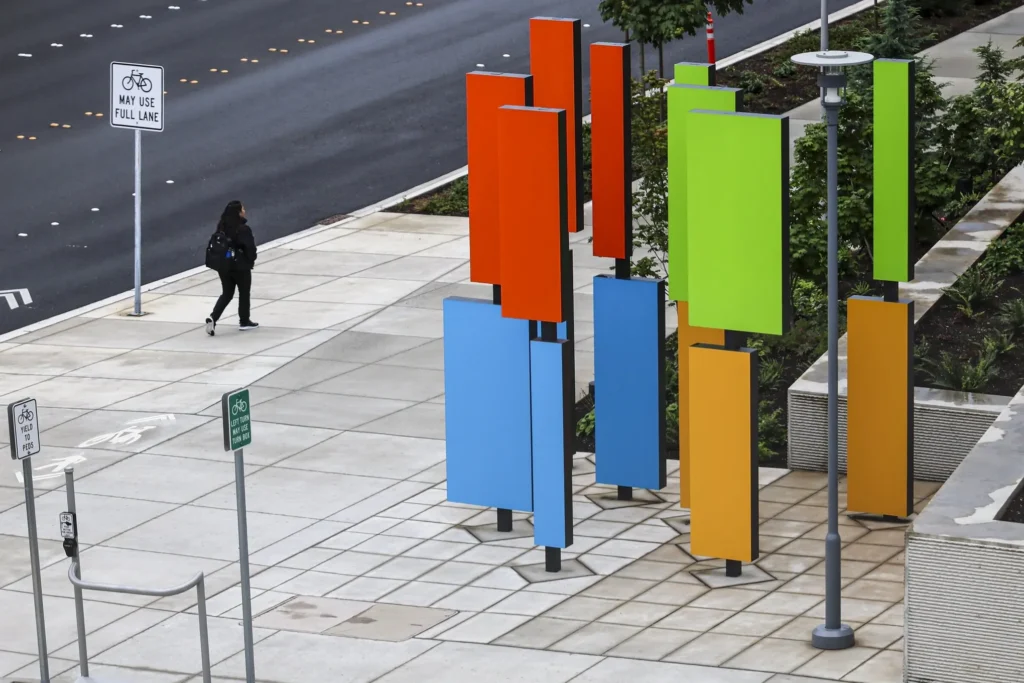The tech world is still reeling from the Microsoft layoffs 2025, an event that has shaken not just the employees of the Redmond based giant but the entire industry. With over 15,000 jobs slashed in just a few months, questions swirl around boardrooms, break rooms, and online forums alike: Why is the world’s most valuable company letting go of thousands? And more importantly, what does this signal about the future of tech employment in the age of AI?
The Numbers Behind the Headlines
Microsoft’s recent layoff waves have been nothing short of historic. In May 2025, over 6,000 employees were shown the door. This was followed by 305 more in early June, and as the company began its fiscal year in July, another 9,000 jobs vanished. For a company that employs over 228,000 people globally, these numbers may seem like a small percentage but for those affected, the impact is devastating.
Public explanations have been, at best, vague. Microsoft has pointed to “flattening management layers” and “eliminating redundant roles.” But insiders argue that the true reasons run deeper and they all point to one disruptive force: artificial intelligence.
AI: A Double Edged Sword
Artificial intelligence has long been heralded as a game changer for productivity, efficiency, and innovation. But as the Microsoft layoffs 2025 demonstrate, AI is also redefining the very nature of work.
“Before AI, Microsoft’s biggest investments were in people engineers, managers, project leads,” says Dr. Karen Fields, a technology analyst at Global Tech Insights. “Today, their major capital goes into AI infrastructure: data centers, cloud expansion, and hardware from companies like Nvidia. The human workforce is being replaced by machines and algorithms, whether we like it or not.”
Indeed, Microsoft’s AI ambitions are no secret. The company has aggressively invested in OpenAI, integrating AI tools like Copilot across its product suite. It’s also building vast AI data centers worldwide, a costly endeavor that demands significant reallocation of resources often at the expense of jobs.

The Silent Shifts in Redmond
For employees in Microsoft’s Redmond headquarters, the writing has been on the wall for months. John Miller, a former project manager in Microsoft’s Azure division, was among the 6,000 let go in May. He describes an atmosphere of uncertainty that began well before the layoffs became public.
“AI was the buzzword everywhere,” Miller recalls. “But behind closed doors, we could see entire project teams getting reassigned or phased out because AI was automating their work.”
Miller’s team, which managed cloud infrastructure processes, found their work increasingly replaced by AI driven systems that required minimal human oversight. Despite high performance ratings, Miller was laid off without clear justification.
Experts caution that Microsoft’s moves are part of a broader industry trend and a glimpse into the future of tech work.
“Tech companies scaled massively during the pandemic to meet remote work and digital demands,” explains Sarah Lopez, senior researcher at the Center for Digital Labor. “But with AI, those same companies are realizing they can achieve the same or better productivity with fewer people.”
According to Lopez, the Microsoft layoffs 2025 reflect a strategic shift rather than short term cost cutting. AI is reshaping operational models, making certain roles obsolete while creating demand for highly specialized positions in AI development, data science, and hardware engineering.
The Human Cost
While the company’s bottom line may benefit, the human toll is undeniable. In online forums and employee groups, stories of anxiety and frustration abound.
“I spent 14 years building my career at Microsoft,” says Priya Desai, a software engineer affected by the July layoffs. “Now I’m wondering if my skills are even relevant in an AI driven world.”
Desai, like many others, faces the daunting task of retraining in a landscape where AI expertise is rapidly becoming a prerequisite for job security. Yet, the opportunities are not equally accessible to all.
“Not everyone can pivot to AI overnight” says Dr. Fields. “We risk creating a two tier workforce those with cutting edge AI skills and those left behind.”
What Lies Ahead?
The Microsoft layoffs 2025 may be unsettling, but they also reveal crucial lessons for employees, companies, and policymakers.
For Employees: Continuous learning is no longer optional. AI literacy, prompt engineering, and understanding data infrastructure are becoming essential across tech roles. Those who invest in upskilling will be better positioned to survive and thrive.
For Companies: Transparency matters. Vague layoff announcements damage morale and trust. As AI reshapes operations, companies must communicate clearly about workforce transitions and support reskilling initiatives.
For Policymakers: The pace of AI adoption demands proactive labor policies. Support for displaced workers, investment in education, and ethical guidelines for AI driven workforce changes are more urgent than ever.
The New Tech Reality
The Microsoft layoffs 2025 mark more than a financial adjustment they symbolize a philosophical shift in how tech giants operate in the AI era. Human capital, once seen as the foundation of innovation, is being re-evaluated in light of machine driven productivity.
For employees, it’s a wake up call to future proof their careers. For Microsoft and its peers, it’s a test of how responsibly they can navigate this transition. And for the world, it’s a glimpse into the complexities of an AI driven economy where progress, profit, and people must find a new, delicate balance.


1 thought on “Microsoft Layoffs 2025: AI Reshapes Tech Jobs as Thousands Face Uncertainty”